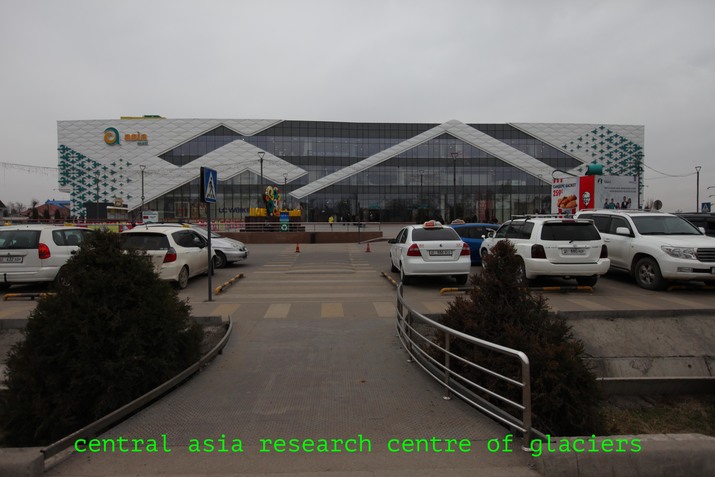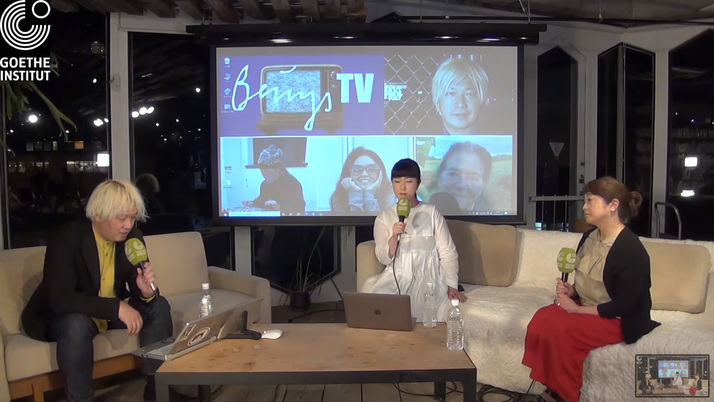
R
E
V N
E
X
T
One of the most influential artists of the 20th century, Joseph Beuys saw art as a driving force for social change. From his experimental sound performances as part of the Fluxus movement to his concept of the body politic as a “social sculpture,” Beuys’s practice was driven by his belief in a radical and universal human creativity capable of instigating revolutionary change, and the themes of democratization, equality, and environmentalism that are reflected in his art remain relevant today. To mark the centennial of the German artist’s birth, Goethe-Institut Tokyo presents “beuys on/off,” a cross-disciplinary program of online and offline discussions, screenings, and creative projects that depart from and respond to his pioneering work. Here are some highlights from the program.
Free International University 2.0
Inspired by Düsseldorf’s Free International University for Creativity and Interdisciplinary Research (FIU), which Beuys co-founded in 1973, Free International University 2.0 is a program of workshops, essays, and discussions on socio-economic, pedagogical, and ecological issues across Eurasia, with relevant texts and documentation shared on beuysonoff.com.
A series of texts and illustrations in Q&A format, produced by the Center for Reproductive Labor on Instagram.
A series of texts and illustrations in Q&A format, produced by the Center for Reproductive Labor on Instagram.
As part of this project, the Center for Reproductive Labor, an activist-led educational platform focused on migrant women’s work, has developed a series of colorfully illustrated Q&A-style posts (also shared on the Center’s social media) explaining what reproductive labor is and how such labor is unfairly “commodified and instrumentalized” in capitalist society. Utilizing an intersectional feminist, socialist, and anti-colonial framework to probe the precarious and exploitative systems of reproductive labor today, the accessible and informative project echoes Beuys’s drive to create socially engaged art and to facilitate public learning and discussion.
Meanwhile, Gulnara Kasmalieva and Muratbek Djumaliev, together with artists from the Bishkek School of Contemporary Art, are working on ecology-themed projects for FIU 2.0. A highlight is Kasmalieva and Djumaliev’s series There could be… (2021), in which photographs of commercial buildings in Bishkek are annotated with the artists’ suggestions for better uses of space. These include new research centers on glaciers and green technology, gesturing at the pressing ecological problems resulting from resource exploitation and unsustainable development in Central Asia. The artists also share their plans for the construction of an eco art residency, built according to permaculture principles such as rainwater harvesting and solar-heated showers. GT
Organized by artist-activist duo Taeyoon Choi and Jung-Yeon Ma, Summer School of Unlearning is a workshop exploring how to question and resist oppressive dogma in our knowledge production. The project takes the form of monthly online seminars in which chosen participants from Kyrgyzstan, Kazakhstan, South Korea, and Japan share their diverse educational practices, and learn and unlearn each other’s ideas about art education. Research and dialogues from the workshop are published online as illustrated essays. There will also be a concluding public event to showcase the participants’ work. CL
Sounds of Eurasia
Eurasia, as conceived by Joseph Beuys, does not only refer to the joint landmass of Europe and Asia, but also to a utopian vision that melds Eastern and Western cultures. Hosted by Tokyo-based musician and curator DJ Sniff, Sounds of Eurasia is a podcast series inviting artists musicians, and activists from 14 countries to reflect upon Beuys’s concept of Eurasia and its relevance to our contemporary cultural environment. To circumvent restrictions on mobility due to Covid-19, the project builds new models of collaboration through analogue sound recordings and online encounters. The resulting “discs” are posted on the beuys on/off website, and the sound project will culminate in an onsite performance at the Goethe-Institut Tokyo. CL
In parallel to “beuys on/off,” “Beuys TV” is a three-episode talk series hosted by journalist Daisuke Tsuda that focuses on exploring the artistic and political intentions of the German artist, interpreting his approach to the relationship between art and society through a contemporary lens. Each episode centers on one theme, with Japanese and international guests joining in the discussion. The first, “Art and Activism,” focuses on the influence of Beuys’s approach to art and political action, while the second, “Beuys and Feminism,” delves into the experiences of women artists within a still male-dominated field. The final TBA episode, “The legacy of the 7000 Oaks,” considers Beuys’s iconic green urban project 7000 Oaks (1982), in which he planted 7,000 oak trees, pairing each with a basalt stone marker, for documenta 7 in Kassel. JC
Cassie Liu is ArtAsiaPacific’s editorial assistant; Judy Chiu and Gabrielle Tse are editorial interns.
To read more of ArtAsiaPacific’s articles, visit our Digital Library.


















